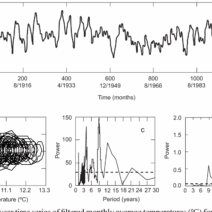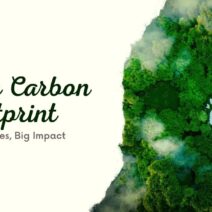As the sun sinks below the horizon, casting a golden hue over lush landscapes, a malevolent shadow looms beneath the surface of our daily existence. This ethereal phenomenon, known as global warming, is not merely a series of meteorological aberrations; rather, it acts like a puppeteer, pulling the strings that govern the growth and proliferation of bacteria. The impacts of climate change extend far beyond rising sea levels and harsher weather patterns. A hidden health crisis is creeping into our lives, fueled by the very warmth that nurtures life.
The relationship between climate change and bacterial growth is intricate, resembling a delicate web spun by nature itself. When temperatures rise, bacteria find themselves in a more hospitable environment. Much like a wildfire spreading through a dry forest, warmer conditions stimulate the growth of various microbial species. These insidious organisms flourish in environments that would have been inhospitable in cooler climates. When considering the broader implications of this, one must contemplate the significant increase in foodborne illnesses, respiratory infections, and other health-related issues tied to bacterial proliferation.
First, let’s delve into the world of food safety. Elevated temperatures create an optimal breeding ground for pathogenic bacteria such as Salmonella and E. coli. As these cunning organisms flourish, they can infiltrate the food supply chain, resulting in severe health crises. The United States witnessed over 48 million cases of foodborne illnesses each year, and with climate change exacerbating these trends, the numbers could rise alarmingly. Consumers unknowingly become players in this toxic game of chance whenever they indulge in summer barbecues or unregulated food markets. The reality is unpalatable: our culinary delights may turn into vectors of disease, all thanks to a warming planet.
Moreover, consider the implications for global water sources. Warmer temperatures exacerbate the occurrence of harmful algal blooms (HABs), which become a breeding ground for bacteria that produce toxins harmful to both human health and aquatic ecosystems. Water bodies, once shimmering havens of life, metamorphose into murky reservoirs of despair. When these blooms proliferate, they lead to unforeseen health risks, contaminating drinking water supplies and recreational areas. Public health officials have already reported increases in cases of gastrointestinal illness linked to contaminated water, which echoes through communities like a haunting refrain.
As one looks beyond the food and water supply, the urban landscape reveals that bacteria thrive in heated environments, particularly within densely populated cities. Urban heat islands, the consequence of concrete and metal absorbing heat, create localized temperature variations that allow bacteria to flourish. The interplay between climate change and urbanization engenders a fertile battleground for pathogens, facilitating the spread of illnesses such as Legionnaires’ disease and various respiratory infections. The sickening symphony of coughing and wheezing becomes a disturbing byproduct of humanity’s reckless encroachment into nature.
To add another layer, changing weather patterns influence the dynamics of human-animal interactions, further increasing the potential for zoonotic diseases—those which jump from animals to humans. Increased temperatures shift animal migration patterns and habitats, bringing wildlife into closer contact with human populations. This phenomenon exemplifies how climate change acts as a silent facilitator of infectious diseases, such as the West Nile virus and Lyme disease. Virulent strains of bacteria and viruses exploit these new avenues, binding human fate to the intricate dance of evolution. The interconnectedness between species is a reminder that everything in life is a double-edged sword; our encroachment upon the living world often has dire consequences.
Yet, there are glimmers of hope. Understanding the symbiosis between global warming and bacterial proliferation invites action. Innovating protection against infectious diseases is a pressing priority. Governments and health organizations must play the role of vigilant guardians, deploying rapid response strategies for outbreaks and bolstering food and water safety regulations. Initiatives advocating for preventative measures and research into sustainable agriculture practices can help stem the tide of bacteria flourishing in this new climate reality.
Moreover, public awareness campaigns can illuminate the potential health risks associated with climate change. Educating communities about proper food storage, safe water practices, and the importance of maintaining biodiversity could arm individuals with the knowledge necessary to combat this looming crisis. It’s not merely an ecological catastrophe; it’s a call to action that requires solidarity in combating a collective adversary. Engaging the public in the fight to slow the pace of climate change can transform the fabric of society, enabling a united front against the silent threats posed by rampant bacterial growth.
Ultimately, the hidden health crisis stemming from global warming serves as a multifaceted warning. The subtle dance of bacteria in warmer waters and on summer picnics reflects a larger narrative about humanity’s relationship with the planet. As stewards of this Earth, navigating its precarious balance requires acknowledging our role in perpetuating climate change. The tension between human health and environmental stability remains a poignant reminder that our decisions today carve the pathways of future generations. Let the urgency for action resonate like a heartbeat, propelling humanity toward a safer, healthier, and more harmonious existence.






